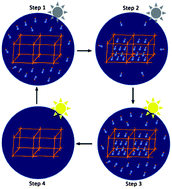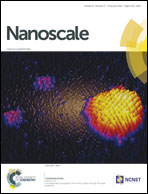A new family of sunlight-driven bifunctional photocatalysts based on TiO2 nanoribbon frameworks and bismuth oxohalide nanoplates†
Abstract
By taking advantage of the structural affinity between bismuth oxohalide and TiO2, we successfully prepare a family of hybrid frameworks via the designated growth of bismuth oxohalide nanoplates on TiO2 nanoribbons, and propose them as sunlight-driven bifunctional photocatalysts for all-weather removal of pollutants. The structural variability of bismuth oxohalide allows the optical absorption of the hybrid framework to be monotonically tuneable across the visible spectrum. Meanwhile, the hybridization greatly increases the surface roughness of the frameworks and enables the frameworks to harvest more photons to participate in photocatalytic reactions. Furthermore, the hybridization establishes two potential gradients to promote the separation of photo-induced electron–hole pairs: the internal electrical field perpendicular to the wide surfaces of bismuth oxohalide nanoplates and across the semiconductor–semiconductor heterojunction. Owing to the synergetic effects of the permeable mesoporous architecture, the intense visible light absorption, and the efficient charge separation, the hybrid frameworks are capable of all-weather removal of pollutants: they utilize the inter-ribbon pores to gather pollutants in the dark (behaving as collectors) and they rapidly degrade the pollutants in the day (behaving as photocatalysts). In particular, the BiOBr@TiO2 framework exhibits very impressive sunlight-driven photocatalytic activity, which is much higher than commercially available P25 TiO2 under the same conditions.


 Please wait while we load your content...
Please wait while we load your content...